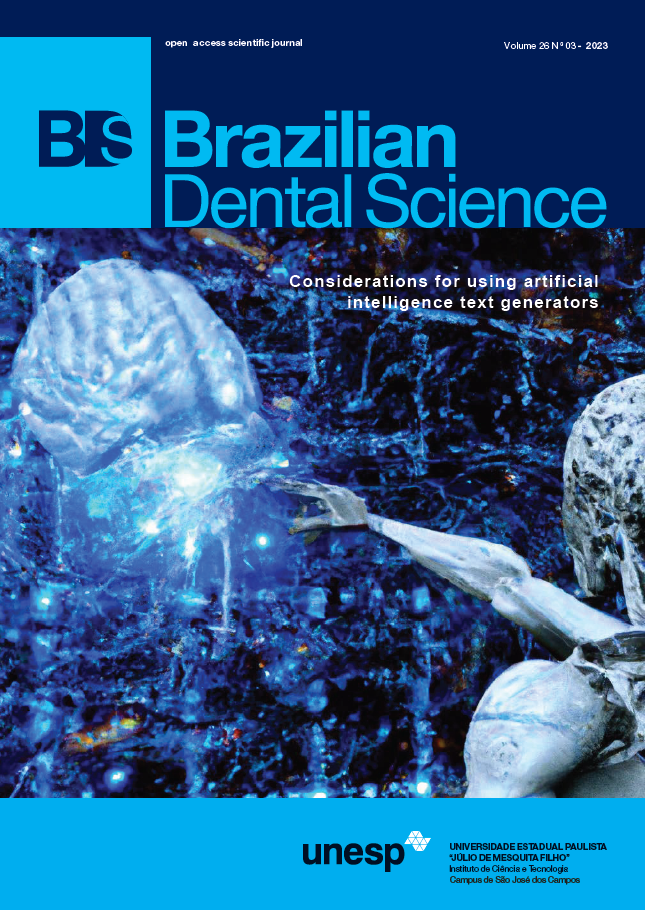The influence of the retention feature in artificial teeth on its attachment to the thermoplastic resin denture base
DOI:
https://doi.org/10.4322/bds.2023.e3770Resumo
Objective: Teeth play a crucial role in masticatory efficiency and esthetic harmony making rehabilitation of partially edentulous patients a challenge because of the limitations of conventional removable partial dentures. As a therapeutic alternative, thermoplastic polymers are used in current dental practice either for practical processing purposes or aesthetics. However, it is recognized that the bond between acrylic resin artificial teeth and thermoplastic polymers has no chemical interaction, and depends on retentive features added to the teeth. This study analyzed the efficacy of two retentive forms of features through compressive strength test and as a secondary outcome, fracture and displacement resistance test. Material and Methods: Three groups of samples each with 14 sets of acrylic teeth were compared when two retentive features, single hole and groove retention, and a control group with teeth without any specific form. The experimental unit consisted of six maxillary anterior teeth, positioned in a linear pattern into a polypropylene block, where each tooth was submitted to a static load until its removal, on a universal testing machine. Results: Those specimens with a groove retention presented larger resistance to displacement when compared to the other groups (p <0.05). This was emphasized by the fracture of the tooth tested, with part of the cervical portion remaining embed in the base, and not its displacement as with (or without) the retentive feature. Conclusion: In this study, the type of retention influenced significantly to a better retention considering teeth and thermoplastic polymer base. The data in this study indicates that a groove placed on the artificial tooth offers significantly better retention efficacy to the point where the displacement was only possible after its fracture.
KEYWORDS
Artificial teeth; Acrylic resins; Denture base; Polypropylene; Retention.
Downloads
Downloads
Publicado
Como Citar
Edição
Seção
Licença
TRANSFERÊNCIA DE DIREITOS AUTORAIS E DECLARAÇÃO DE RESPONSABILIDADE
Toda a propriedade de direitos autorais do artigo "____________________________________________________________________" é transferido do autor(es) para a CIÊNCIA ODONTOLÓGICA BRASILEIRA, no caso do trabalho ser publicado. O artigo não foi publicado em outro lugar e não foi submetido simultaneamente para publicação em outra revista.
Vimos por meio deste, atestar que trabalho é original e não apresenta dados manipulados, fraude ou plágio. Fizemos contribuição científica significativa para o estudo e estamos cientes dos dados apresentados e de acordo com a versão final do artigo. Assumimos total responsabilidade pelos aspectos éticos do estudo.
Este texto deve ser impresso e assinado por todos os autores. A versão digitalizada deverá ser apresentada como arquivo suplementar durante o processo de submissão.




























